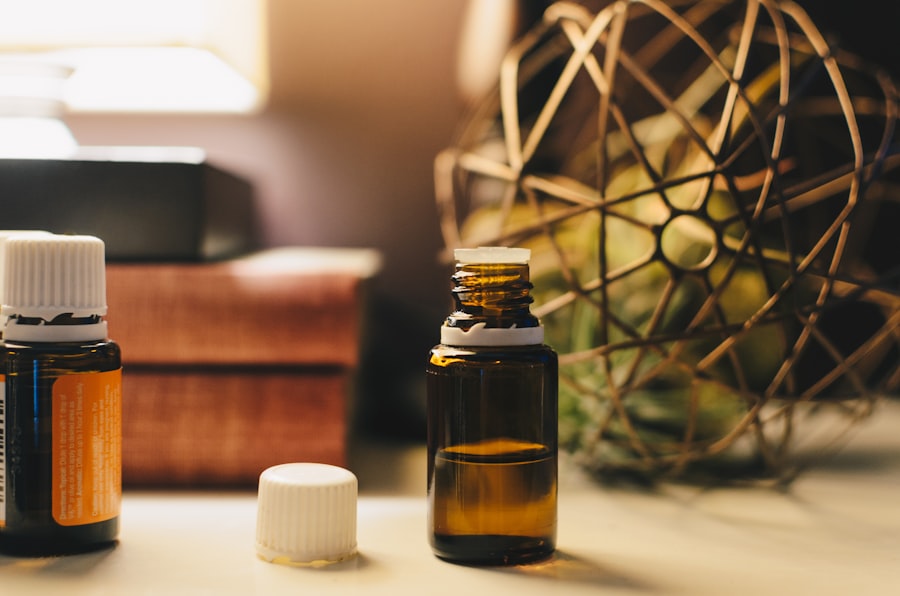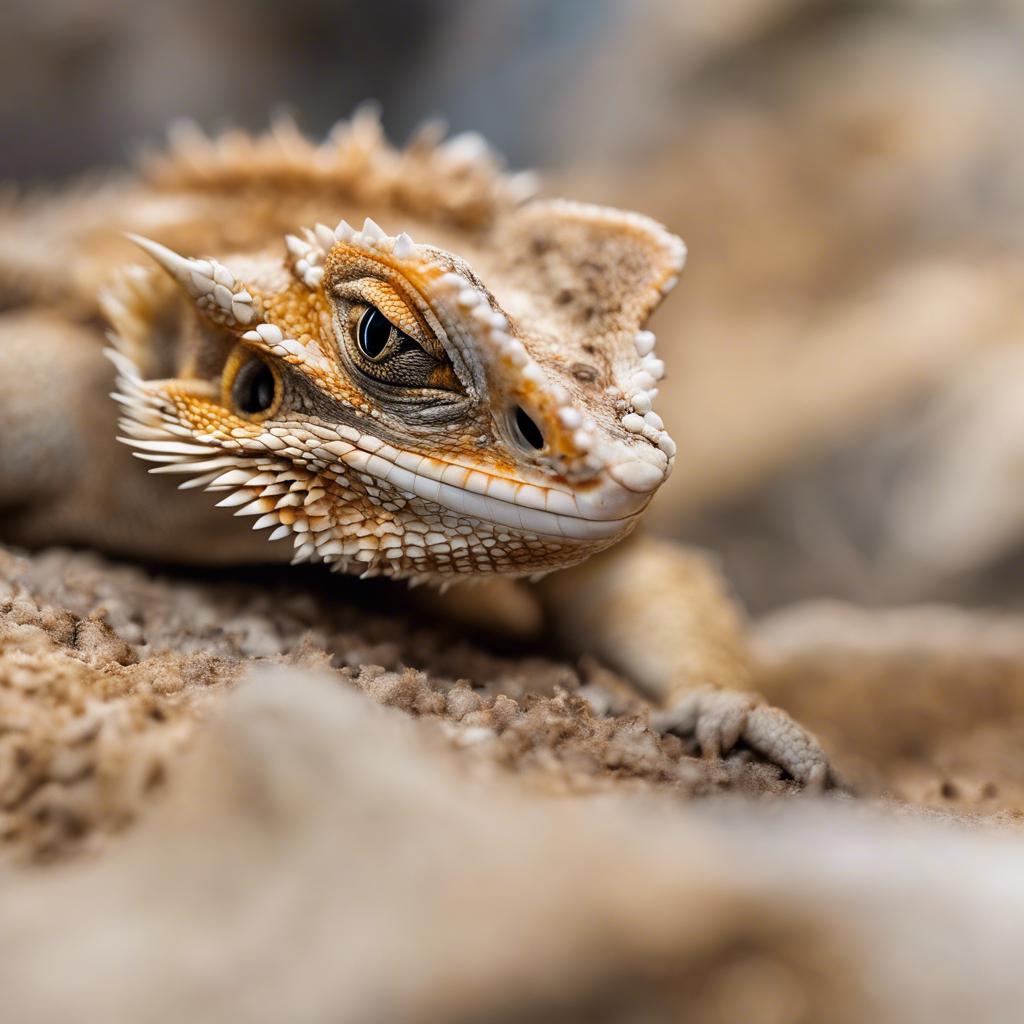Bearded dragons are popular pets known for their unique appearance and docile nature. However, like any other living creature, they can experience health issues that require attention and care. One such condition is sunken fat pads, which can be a cause for concern among bearded dragon owners. In this article, we will explore what sunken fat pads are, their causes, symptoms, diagnosis, treatment, and prevention. It is important for bearded dragon owners to be aware of this condition in order to provide the best care for their pets and ensure their overall well-being.
Key Takeaways
- Sunken fat pads in bearded dragons are a common health issue that can be caused by various factors.
- Sunken fat pads are areas on a bearded dragon's body where the fat deposits have decreased, resulting in a sunken appearance.
- Causes of sunken fat pads in bearded dragons can include malnutrition, dehydration, illness, and stress.
- Symptoms of sunken fat pads in bearded dragons can include a visible indentation or depression in the skin, lethargy, and weight loss.
- Treatment of sunken fat pads in bearded dragons may involve dietary changes, hydration therapy, and veterinary care. Regular check-ups and monitoring can help prevent sunken fat pads from developing.
What are Sunken Fat Pads in Bearded Dragons?
Sunken fat pads refer to a visible indentation or sagging of the fat pads located on the sides of a bearded dragon's body. These fat pads are located just behind the front legs and play a crucial role in the overall health of the reptile. The fat pads serve as energy reserves that help sustain the bearded dragon during periods of low food availability or hibernation. They also provide insulation and protection for vital organs.
Causes of Sunken Fat Pads in Bearded Dragons
There are several factors that can contribute to sunken fat pads in bearded dragons. One common cause is malnutrition, which occurs when a bearded dragon does not receive a balanced diet that meets its nutritional needs. Inadequate intake of essential nutrients such as vitamins, minerals, and proteins can lead to weight loss and sunken fat pads.
Dehydration is another common cause of sunken fat pads in bearded dragons. These reptiles require access to fresh water at all times to maintain proper hydration. Without enough water intake, they can become dehydrated, leading to weight loss and visible changes in their fat pads.
Illnesses and underlying health conditions can also contribute to sunken fat pads in bearded dragons. Infections, parasites, metabolic disorders, and organ dysfunction can all affect the reptile's overall health and lead to weight loss and changes in fat pad appearance.
Symptoms of Sunken Fat Pads in Bearded Dragons
The most obvious symptom of sunken fat pads in bearded dragons is a visible indentation or sagging of the fat pads located on the sides of their body. This can be easily observed by gently running your fingers along the sides of the reptile's body. In addition to the physical changes, other symptoms may include weight loss, lethargy, decreased appetite, and changes in behavior.
It is important to note that sunken fat pads are not a standalone condition but rather a symptom of an underlying health issue. Therefore, it is crucial to pay attention to these symptoms and seek veterinary care if your bearded dragon is showing signs of sunken fat pads or any other health concerns.
Diagnosis of Sunken Fat Pads in Bearded Dragons
If you suspect that your bearded dragon has sunken fat pads, it is important to seek veterinary care for a proper diagnosis. A veterinarian will perform a physical examination and may also recommend blood work to assess the reptile's overall health and identify any underlying conditions.
During the physical examination, the veterinarian will assess the appearance of the fat pads, check for signs of dehydration, and evaluate the bearded dragon's body condition. Blood work can provide valuable information about the reptile's organ function, nutrient levels, and overall health status.
Treatment of Sunken Fat Pads in Bearded Dragons

The treatment for sunken fat pads in bearded dragons will depend on the underlying cause of the condition. If malnutrition is identified as the cause, adjustments to the bearded dragon's diet will be necessary. A veterinarian may recommend a specific diet plan that includes a balanced ratio of protein, vegetables, and fruits to ensure the reptile receives all the necessary nutrients.
In cases of dehydration, the veterinarian may recommend providing additional water or electrolyte solutions to help rehydrate the bearded dragon. It is important to follow the veterinarian's instructions carefully and monitor the reptile's water intake to ensure proper hydration.
If an underlying illness or health condition is identified, the veterinarian will develop a treatment plan specific to the bearded dragon's needs. This may include medications, dietary changes, or other interventions to address the underlying issue and promote overall health.
Prevention of Sunken Fat Pads in Bearded Dragons
Preventing sunken fat pads in bearded dragons starts with providing proper care and nutrition. It is essential to offer a balanced diet that meets the reptile's nutritional needs. This includes a variety of protein sources such as insects and small vertebrates, as well as a mix of vegetables and fruits. Avoid feeding your bearded dragon foods that are high in fat or lacking in essential nutrients.
Hydration is also crucial for preventing sunken fat pads. Ensure that your bearded dragon has access to fresh water at all times and monitor their water intake regularly. Additionally, provide a suitable habitat with appropriate temperature and humidity levels to support their overall health.
Regular veterinary check-ups are essential for monitoring your bearded dragon's health and detecting any potential issues early on. A veterinarian can perform routine physical exams, assess their body condition, and recommend any necessary interventions or adjustments to their care.
Bearded Dragon Care: Diet and Nutrition
A balanced diet is crucial for the overall health of a bearded dragon and can help prevent conditions such as sunken fat pads. Their diet should consist of a variety of protein sources, including insects like crickets, mealworms, and dubia roaches. Small vertebrates like pinky mice can also be offered occasionally but should not make up the majority of their diet.
In addition to protein, bearded dragons require a mix of vegetables and fruits to meet their nutritional needs. Leafy greens such as collard greens, kale, and dandelion greens are excellent choices. Fruits should be offered sparingly due to their high sugar content, but options like berries and melons can be given as occasional treats.
It is important to avoid feeding your bearded dragon foods that are high in fat or lacking in essential nutrients. This includes fatty meats, processed foods, and foods that are toxic to reptiles, such as avocado and rhubarb.
Bearded Dragon Care: Hydration and Water Intake
Proper hydration is essential for the overall health of a bearded dragon and can help prevent conditions like sunken fat pads. These reptiles require access to fresh water at all times. You can provide water in a shallow dish or use a water dropper to offer water directly to the bearded dragon.
In addition to providing water, you can also help maintain hydration by misting the enclosure with water or offering a shallow dish of water for them to soak in. This can help increase humidity levels and allow the bearded dragon to absorb water through their skin.
It is important to monitor your bearded dragon's water intake regularly. If you notice a decrease in their water consumption or signs of dehydration such as sunken eyes or wrinkled skin, it is important to seek veterinary care.
Bearded Dragon Care: Regular Veterinary Check-Ups and Monitoring
Regular veterinary check-ups are crucial for the overall health and well-being of your bearded dragon. A veterinarian can perform routine physical exams, assess their body condition, and identify any potential health issues early on.
During these check-ups, the veterinarian may also recommend blood work to assess the reptile's organ function, nutrient levels, and overall health status. This can help identify any underlying conditions that may contribute to sunken fat pads or other health concerns.
In addition to regular veterinary check-ups, it is important to monitor your bearded dragon's health at home. Pay attention to their appetite, behavior, and physical appearance. Any changes in these areas should be noted and discussed with a veterinarian.
Sunken fat pads in bearded dragons can be a cause for concern among owners, as they can indicate underlying health issues. It is important to be aware of this condition and understand its causes, symptoms, diagnosis, treatment, and prevention. Providing proper care and nutrition, ensuring hydration, and seeking regular veterinary check-ups are essential for the overall health and well-being of your bearded dragon. If you notice any signs of sunken fat pads or other health concerns, it is important to seek veterinary care promptly to ensure the best possible outcome for your pet.
If you're concerned about sunken fat pads in your bearded dragon, it's important to understand the potential causes and how to address them. In a related article on Reptile Wizard, they discuss the various factors that can contribute to sunken fat pads in bearded dragons and provide helpful tips on how to prevent and treat this condition. To learn more about this topic, check out their informative article here.
FAQs
What are sunken fat pads in bearded dragons?
Sunken fat pads in bearded dragons refer to the loss of fat deposits in the areas around the hips and tail base, resulting in a concave appearance.
What causes sunken fat pads in bearded dragons?
Sunken fat pads in bearded dragons can be caused by a variety of factors, including malnutrition, dehydration, illness, and old age.
How can I tell if my bearded dragon has sunken fat pads?
You can tell if your bearded dragon has sunken fat pads by observing the areas around its hips and tail base. If these areas appear concave or sunken, it may be a sign of sunken fat pads.
What should I do if my bearded dragon has sunken fat pads?
If your bearded dragon has sunken fat pads, you should take it to a veterinarian who specializes in reptiles. The vet can diagnose the underlying cause of the sunken fat pads and recommend appropriate treatment.
Can sunken fat pads in bearded dragons be treated?
Yes, sunken fat pads in bearded dragons can be treated if the underlying cause is identified and addressed. Treatment may involve changes to the bearded dragon's diet, hydration, and environment, as well as medication or other medical interventions as needed.
How can I prevent sunken fat pads in my bearded dragon?
To prevent sunken fat pads in your bearded dragon, you should provide it with a balanced diet that includes appropriate amounts of protein, vegetables, and fruits. You should also ensure that your bearded dragon has access to clean water at all times and that its environment is appropriate for its needs. Regular check-ups with a reptile veterinarian can also help identify and address any potential health issues before they become serious.

